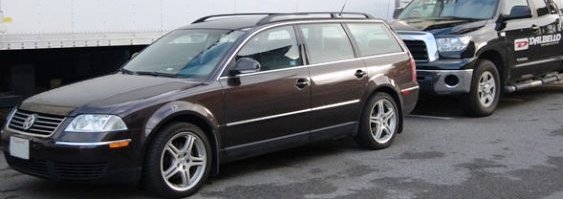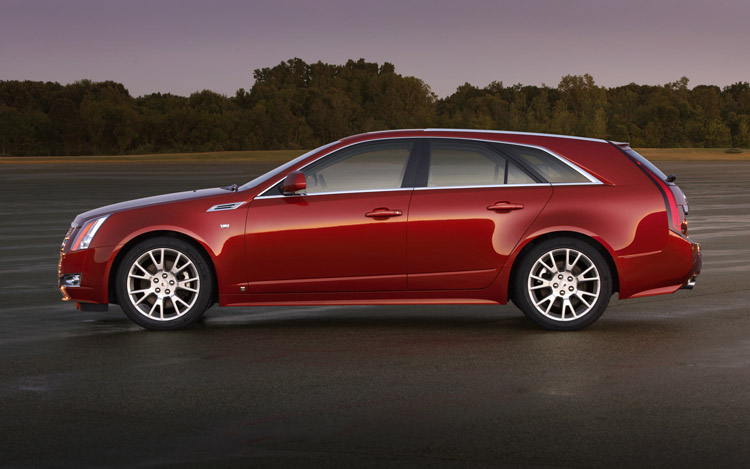Oooooh, be still my beating heart. I’ve never been a Cadillac fan, since they seem to prefer excess and flash to function and efficiency, but I have to give them props for trying to step up and follow the European lead in diesel performance vehicles. Have a look at the Cadillac CTS Wagon:
GM says the 4.5L Duramax, which features aluminum cylinder heads with integrated manifolding and a variable-vane turbocharger mounted in the vee, is capable of delivering more than 310 hp and in excess of 520 lb-ft of torque. It also claims the engine meets the tough 2010 emissions standards, making it legal in all 50 states.
This diesel engine is said to get 20-25% better mileage than the Ultra V-8 engine and you know it will totally kill the numbers on the absurd supercharged V-8 CTS-v. In fact, I think they should just deploy the V-6 diesel in both America and Europe.
Why do it? While the CTS is due to get a 2.9L V-6 diesel in Europe, the 4.5L diesel V-8 would most likely be seen as a way of filling the obvious gap between the 304-hp direct-injection V-6 of the regular CTS and the 556-hp supercharged V-8 of the CTS-v here in the U.S.
What they should really do is can the gasoline V-6 version and offer the same diesel option as in Europe. It will have more power and better mileage. I would be more than happy with a 2.9L V-6 diesel. Who needs anything bigger? Oh, right, it’s Cadillac. Well, I guess better to have a massive V-8 diesel option than none at all. Either way, this would be a fantastic regatta/tow vehicle.
Disclaimer: I already own a VW version of this car, manufactured four years ago

…but I am sure I could be talked into updating to an American made V-6 diesel Cadillac SuperWagon.
